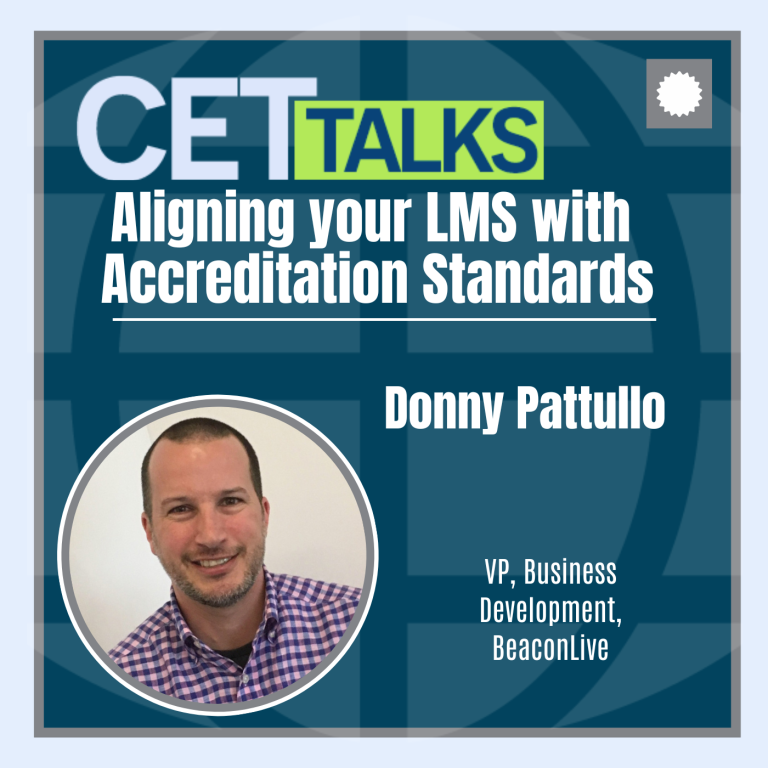Episode 21
- Episodes
- Episode 21: Pathways to Success
.
CET Talks: Accreditation, Learning and Leadership
Episode 21
August 13 2024 . 21 MINUTES
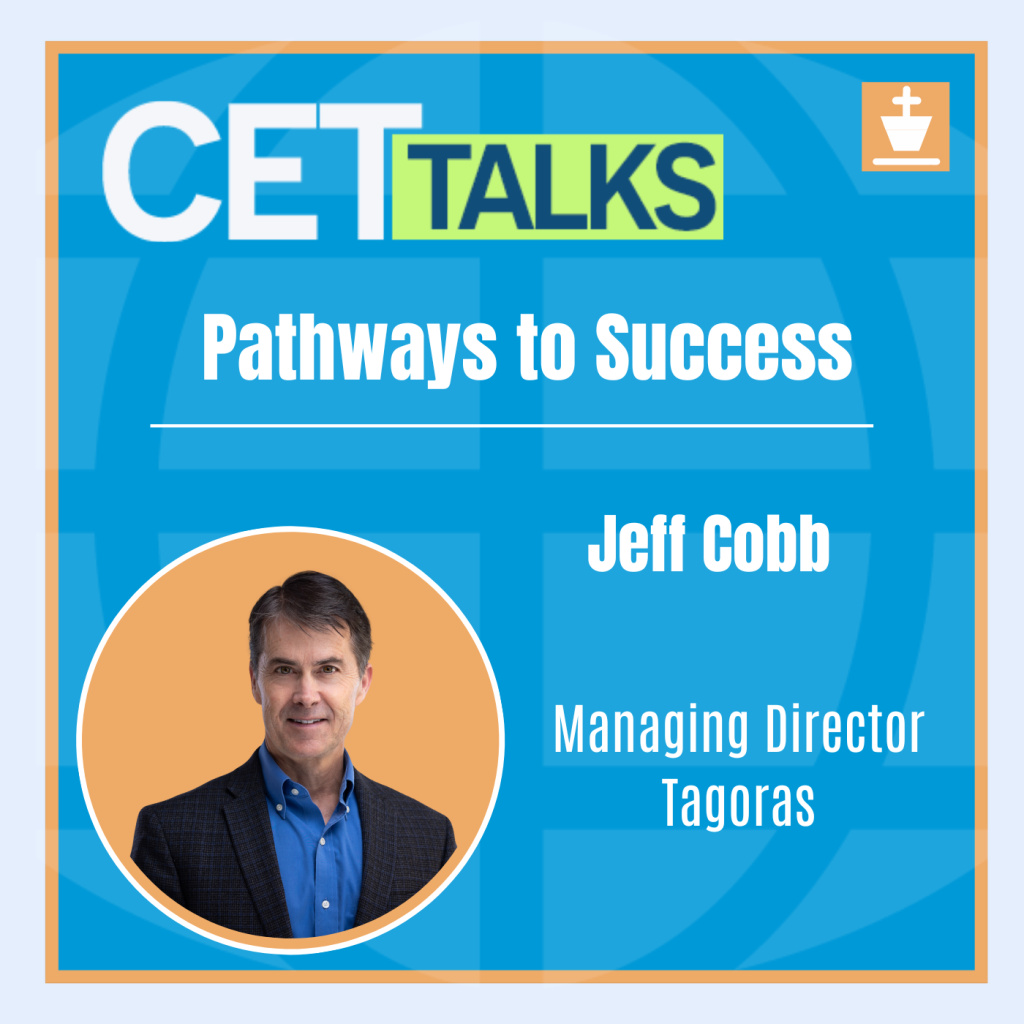
Pathways to Success: The Value of Lifelong Learning through Digital Credentials
In the rapidly evolving landscape of education and employment, digital credentialing stands as a critical bridge between learning pathways and market needs. Join Jeff Cobb, co-founder of Tagoras and a seasoned expert in lifelong learning strategies, as he unpacks the complexities and opportunities within digital credentialing systems. This episode will delve into the challenges organizations face, showcase best practices for seamless integration, and explore future trends that are shaping this dynamic field. Tune in to discover how digital credentials can transform educational achievements into tangible career advancements, fostering a more skilled and adaptable workforce.
Listen to the Podcast
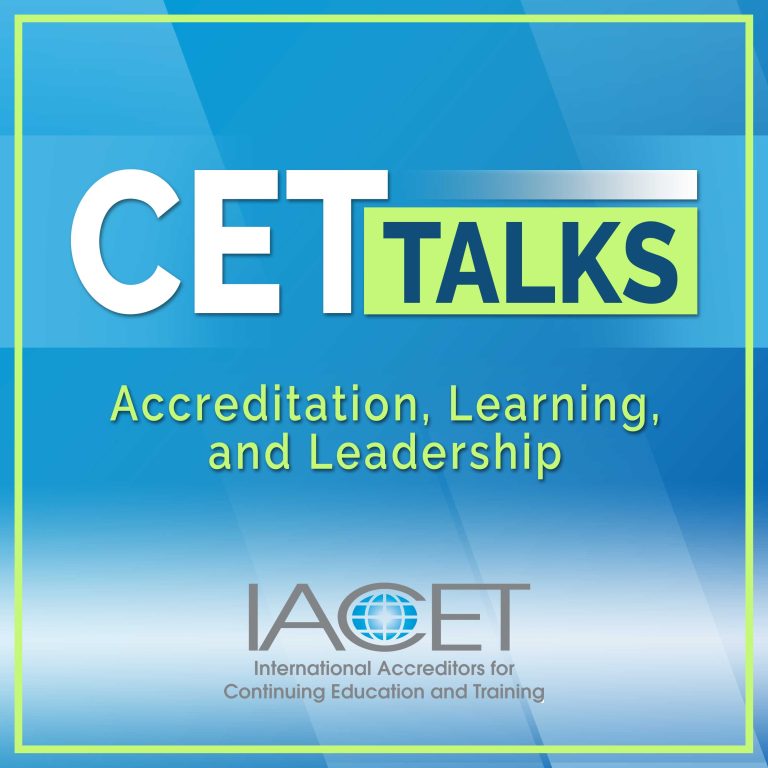
Welcome to CET Talks, the International Accreditors for Continuing Education and Training’s podcast, where we convene thought leaders in the continuing education and training ecosystem to share ideas, research, best practices, and experiences that promote the creation of a world that learns better. Your hosts are Randy Bowman, Interim President and CEO of IACET, and certified corporate wellness specialist Mike Veny.
In the rapidly evolving landscape of education and employment, digital credentialing stands as a critical bridge between learning pathways and market needs. Join Jeff Cobb, co-founder of Tagoras and a seasoned expert in lifelong learning strategies, as he unpacks the complexities and opportunities within digital credentialing systems. This episode will delve into the challenges organizations face, showcase best practices for seamless integration, and explore future trends that are shaping this dynamic field. Tune in to discover how digital credentials can transform educational achievements into tangible career advancements, fostering a more skilled and adaptable workforce.
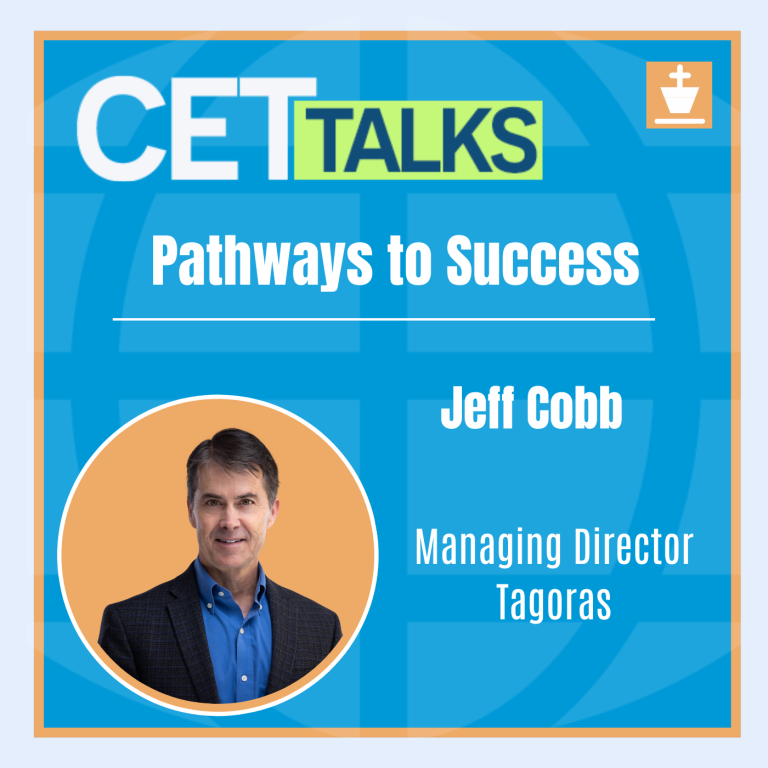
Transcription
Host: Welcome to CET Talks, the International Accreditors for Continuing Education and Training’s podcast, where we convene thought leaders in the continuing education and training ecosystem to share ideas, research, best practices, and experiences that promote the creation of a world that learns better. Enjoy the episode.
Randy Bowman: Hello, and welcome to CET Talks. My name is Randy Bowman and I’m here with my co-host, Mike Veny, a certified corporate wellness specialist and CEO of an IACET-accredited provider. Hey, Mike, it’s so great to have you here again today.
Mike Veny: Hello, Randy. And hello to our listeners out there. Randy, I wanted to tell you something that you might not know about me. I am anti-paper.
Randy Bowman: Oh, me too. I hate paper.
Mike Veny: Yeah, and it’s really interesting because part of the IACET accreditation process for our company, we had to talk about where we secure digital certificates and stuff like that. And it was a very interesting conversation that I’m still trying to figure out, especially as we’re talking about digital credentialing on so many different levels now.
Randy Bowman: Well, that’s great. You know, digital credentialing is definitely a hot topic. It is changing the way we recognize learner achievement. And today we have a great guest who’s going to talk to us a little bit more about that.
Mike Veny: Yes, we do. We have Jeff Cobb on the show today. Jeff Cobb is an entrepreneur, author, and strategic advisor with more than two decades of experience in the global market for lifelong learning. He’s the co-founder of Tagoras, a firm that helps organizations in the learning business maximize reach, revenue, and impact. He speaks and writes regularly on the future of learning and the transformative power of lifelong learning for individuals and businesses in the global economy of the 21st century. But on a personal note, he is the co-host of the Leading Learning podcast, which I want to just say on a personal note, has been a really great podcast for me to listen to and I’ve learned so much from. So thank you so much for being on the show, Jeff.
Jeff Cobb: Hey, thanks for having me. I’m so glad you were getting value out of the Leading Learning podcast. We’ve been at it for a long time, put a lot of effort into it, so we’re always gratified to know that people are listening and are getting value out of it.
Randy Bowman: Well, you are a long time influencer in this market space, so we are so glad to have you with us today. To get started with your firm, Tagoras has been deeply involved in shaping the market for lifelong learning. Digital credentialing is a term that’s becoming popular. So, could you explain in some simple terms what it is and why it’s so popular?
Jeff Cobb: So, I guess in the simplest terms, a digital credential is a way of showing that you have participated in and completed a learning-related activity of some sort and packaging up the data around that in a verifiable way, so it can be communicated and received by somebody else who might care about that data. So, it’s a way of taking all those learning experiences you have and being able to show the world, which is very often an employer or a potential employer, that you have accomplished these things, and this is how you have done it. Then, when you did them, where you did them, what the results were.
Mike Veny: So, back in the day, we would take pieces of paper, our certificates, degrees and stuff, and have to mail copies of them in. This is the alternative to that and actually, a much more efficient way of doing it. When it comes to organizations who are looking to integrate digital credentialing, what best practices do you recommend for incorporating it effectively and securely?
Jeff Cobb: The main thing if you’re going to get into offering digital credentials is really understanding the market need and making sure that the market need is actually there. A big question to ask initially, and I’m thinking of this primarily in an employment situation. That’s not the only place that digital credentials will apply, but I’ll stick with that—But you want to ask, are employers going to value the credential if you already have current credentials? How do they value those? Is the digital credential going to be a replacement for that or an extension of that? If it’s something completely new, you really need to know that employers are going to say, “Yes, we will take this into account when we’re hiring; when we’re promoting, it will be valuable to us. These are the skills and knowledge specifically that we would like for you to be validating and verifying and helping to communicate to us.” Because if you haven’t got that kind of demand and agreement with employers, eventually the learners are going to figure that out. You need the learners to participate in and earn this credential and you want that to continue and to grow, but if it doesn’t mean anything to the employers, you’re really never going to get it off the ground. The other thing I would say is just, practically speaking, organizations should—particularly if you’re just getting into this—really focus on working with what you already have. I think it can be daunting, especially if you’ve never done credentialing before to say, “Well, how do we stand up a credential? How do we get all the content and stuff that we need to do this?” Look at what you’ve already got that you can work with. Just down the road from me is Elon University, and they have what they call their College to Careers Pathway badge. Basically, that can be earned by participating in a certain amount of coursework towards professional development, but it can also include things like employer events and other types of professional development activities. You can take account of those in something like a digital credential. They can contain that data instead, they’ve got content courses that they already have, they’ve got other things they can bring into it and they’re now packaging that up and saying, “You can earn this badge, College to Career Pathways, and here’s what that badge means.” So working with that to create the badge. And then the last thing, and we can talk about this more, is do it in as much of a standards-focused way as you can. Use technology that is bought into the standards that are emerging out there around digital credentialing, so that the chances that the learner’s going to be able to incorporate it into their LinkedIn profile or wherever they’re going to store it; that employers are going to be able to view it, receive it, work with it. You want to increase the chances of that as much as possible.
Randy Bowman: Thank you, Jeff, you hit upon something I’ve been saying for several years in digital badging and this idea of needing to hit a critical mass where there are basically three entities involved in the idea of digital badges and the adoption of digital badges. And that is the training provider or educational facility providing them, the learner needing them and wanting them, and then the employer being able to read them. Right. And you need all three of those to hit the, I guess a critical mass, or need to see the value of those all at the same time. How do we get there?
Jeff Cobb: I think that there needs to be a lot of collaboration. There needs to be a lot of dialogue, I think, particularly between providers of the credentials and the education that’s behind the credentials and employers coming to the table together and figuring out those standards, figuring out how that communication is going to happen. That’s sort of a more technical side of it, but there’s frankly, a business development side of this. If you’re in an organization and you want your credential to be accepted out there in the employment marketplace, you’ve got to be out there talking with employers, making them aware of the credential, how the credential can make their lives easier from hiring and promoting and the things that they need to be able to do with it. And getting their buy-in, so that as you’re issuing this credential, they are going to accept that credential. It is actually going to be preferably something that’s required, but at the very least, something that’s highly desirable in their hiring processes. And that’s not an overnight process; that takes time. You can think about technologies like the fax machine coming along. It took quite a while for there to be enough people who had fax machines, that actually became a form of communication. That’s an old technology, but any new technology-driven approach that comes along like this, as you’re saying there does have to be that critical mass there. One of the reasons we’re so interested in digital credentialing right now, is it forms a critical bridge between the provider and the employer that the learner can kind of cross. And we do seem to be getting very close to hitting critical mass on it. So, we’re optimistic about where digital credentials are going to go in the next few years.
Randy Bowman: I agree; I think we are getting closer than we ever have been. What are the data and the metrics that help us measure if we’re reaching that critical mass, and more generally, how are data and analytics used in the development and maintenance of digital credentialing systems? Are there specific measurements that an organization should focus on to make sure that we are meeting the educational and market needs with digital credentials?
Jeff Cobb: Data and analytics are so fundamental to this because that’s really the opportunity that digital credentials provide. I mean, we’ve traditionally, as Mike had referenced, had paper certificates and things like that before, which of course were valuable, but it’s hard to manage that data. You know how many certificates you’ve issued as a paper certificate or maybe as a PDF. But tracking what happens with those, where they go, the data that they can carry with them, has always been very limited. But a digital credential can contain a lot of the traditional learning type data that we’ve often captured in things like a learning management system. It can be scores, it can be what has been completed, it can be what the series of courses was. It can be other activities besides the course. If there was an internship or a mentorship that went on, what data can be captured from that? So, making it a very data-rich vehicle for conveying what the learner has done, I think is really critical to the overall value of a digital credential. That’s really why they’re so valuable because they can capture that and package that up and provide you a way with communicating it. So again, it goes back to understanding what’s needed out there in the marketplace or the context in which the digital credential is going to be used. So what do you need to capture in that, that both the learner and the person who’s going to be interfacing with the learner is going to care about; make sure you’re capturing that data. And then in terms of whether you’re heading towards that tipping point or not, that critical mass there, there’re simple things you can do. So less for formal sorts of things, like if you’re issuing a digital credential, are you seeing your target audience? Do little things like display it on their LinkedIn profile, is that happening because pretty much all digital credentials can be displayed on LinkedIn or other types of sites that might have relevance in your particular marketplace. Is that happening? And then surveying or doing other forms of, you know, outreach to the employers in your market. What percentage say that they actually consider the credential in their hiring or in their promotion process; what percentage may actually require it to some degree? This is data that you can collect, and you need to start collecting it early and then see how it grows over time. If it’s a renewable sort of credential, are people actually doing that, you know, are they maintaining it? So you’re going to be looking at all of these and, you know, many of these are the types of credentials that you wanted to collect, even when there was paper-based in the past. But you have new methods for doing that and better ways of tracking all of that.
Mike Veny: And to our listeners out there, if you’re listening closely here, we’re talking about the importance of understanding the needs through data and relationships with the employers, building that relationship to get to know them and figure out what’s important and let them know who you are. That being said, what strategies would you suggest for organizations that need to manage digital credentialing across diverse geographic and regulatory environments?
Jeff Cobb: Well, I think this is going to be an area where standards are incredibly important and there are some well-established standards at this point. It’s still early enough, we don’t know what’s necessarily going to be the dominant standard over time, in terms of how the data is captured, how it’s managed, how it’s communicated. But I’ll give a shout out to our colleagues at one Ed Tech, formerly IMS Global, doing great work in this area. They’re behind the open badges specification, which provides for how you’re going to create and manage and communicate badge data. They’re also behind the comprehensive learner record, which they’re really in dialogue with employers about. That’s the record that an employer could potentially bring into a candidate system, a hiring system, their internal HR systems. So getting adoption for that. But if you’re going to be serving diverse audiences, whether within a single country or across multiple geographies, multiple districts, governmentally, that sort of thing, you really have to have that standards basis for this to work. I mean, to go back to the fax machine example, you couldn’t have—think VHS and beta standard had to win out there, so that everybody was communicating in the same way; that will ultimately happen here. I think what EdTech is doing is a good foundation to bet on, even if that’s not ultimately the standard is probably the path to what the standards will be.
Randy Bowman: So, you hit upon another one of the things I think about often when you were talking about candidate recruitment systems and candidate hiring systems. I hate resumes, I hate the whole thing, the gamification and all of that. Can you talk a little bit about how digital badges could change the future of hiring and get rid of this archaic thing we call a resume?
Jeff Cobb: Yeah, it’ll be interesting to see if they go away entirely or not, but I mean, it’s pretty difficult to fudge a digital credential. You have to do what the credential says you did. It has to be verified; it has to be validated, at least if it’s a true standards-based digital credential. And so once you start to have that collection of your learning and experience portfolio validated and verified in that way, I mean a resume, it may be more like a cover letter becomes much more important because that gives you the chance outside what your credentials say to contextualize it and humanize it to you and tell your story around it. But I think that will become more important than the typical resume where, you know, let me put in this activity that I really just did one weekend two years ago. I’m going to say I’m a Habitat for Humanity volunteer or whatever, but that’s really the only time I ever did that. And resumes are full of that kind of stuff. But once you’ve got this verified, validated data, to then be able to tell your story around it in some way, whether that’s in writing or video or whatever, I can see that becoming more important. I suspect the traditional sort of resume is probably starting to see the end of its days.
Randy Bowman: Thank you. I appreciate your insight on that. So, one of the questions we ask all of our guests is, what does a world that learns better look like to you?
Jeff Cobb: Yeah, to be honest, this is kind of the question that gets me up every morning. I mean, it’s why I do the work I do and have for years is winning the world to be a world that learns better. And I think I would encapsulate it as saying that a world that learns better is a world where people really hold themselves much more fully open to and responsible for learning. And I think that obviously applies in a professional context. We all have to be aware of what’s changing and chosen professions and be prepared to learn and adapt. That’s just the way of work and careers these days. But for me, I think it also applies broadly to life in general and just learning more broadly. And I’ll try to avoid getting political at all, but it seems pretty clear that we’re living in a time where there are a lot of factions out there. A lot of different groups have sort of huddled up with their way and their perspective. And I think a lot of groups and individuals in them feel like they have the answers, and no one has the answers. We all have to be continually learning together, to figure out collectively what works. I mean, we’ve got some big issues to solve as human beings. And to a large extent, probably that sort of perspective can only be fostered when you’re young. It emphasizes the importance of pre-K through 12 and helping to shape how people think about learning and become lifelong learners. But at the same time, I do think that organizations that serve adult, lifelong learners have an opportunity, and I would say they have a responsibility to foster greater openness to learning among the people that they serve.
Randy Bowman: Wow. Thank you. That’s so insightful. As we wrap up today, thank you, Jeff, for joining us. Your insights have been incredible. I especially taking away for me this idea of business development. Once you achieve your credential, or once you develop your credential, it’s up to you as the credential developer to get out there into the marketplace and sell that value to employers. Yeah. So, I think that was very insightful. Mike, what kind of takeaways did you have today?
Mike Veny: This was a phenomenal interview and one of the most important ones. What I think is important for the listeners to think about is that digital credentialing offers a new level of accuracy. And when we can accurately measure things, we can be more effective in all areas of life. So that’s something to keep in mind as we’re all evolving into the space where this will soon be the norm, and we won’t even have to have a special episode on digital credentialing. That’s right.
Randy Bowman: Well, thank you, Jeff. Thank you, Mike, for being here. As we wrap up today’s discussion on digital credentialing and its influence in the learning environment, we want to hear from you, our listeners. What questions or experiences do you have about digital credentialing or learning pathways? Share with us on our social media using the hashtag CET Talks. Please share your experiences and insights on our LinkedIn page. Your stories, your experiences, provide invaluable lessons and inspiration for others who are navigating these exact same waters. So please don’t forget, you can submit topic ideas, suggestions for guests, and other feedback on CET Talks podcast page of the IACET.org website. We certainly hope you’ll subscribe to this podcast on your favorite podcast platform, so you don’t miss any of these exceptional guests, like Jeff. Thank you so much for joining us today. See you next time.
Host: You’ve been listening to CET Talks, the official podcast of IACET. Don’t forget to subscribe to the podcast on Spotify, Apple podcasts, or wherever you listen to podcasts. To learn more about IACET visit IACET.org, that’s I-A-C-E-T.org. Thanks for listening, and we’ll be back soon with the new episode.
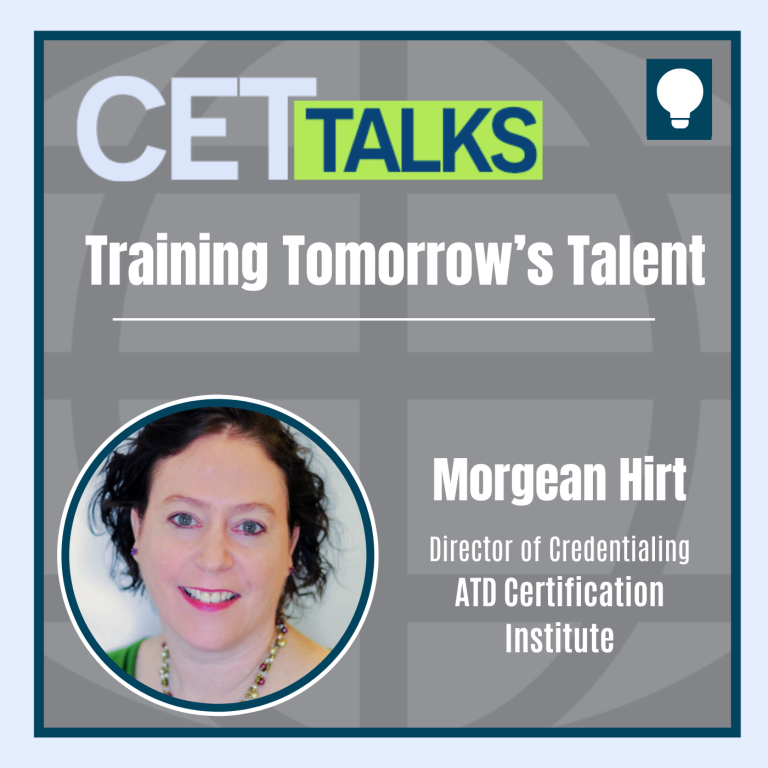
Episode 31: Training Tomorrow’s Talent: Exploring Certification, Standards, and Impact with ATD’s Certification Institute
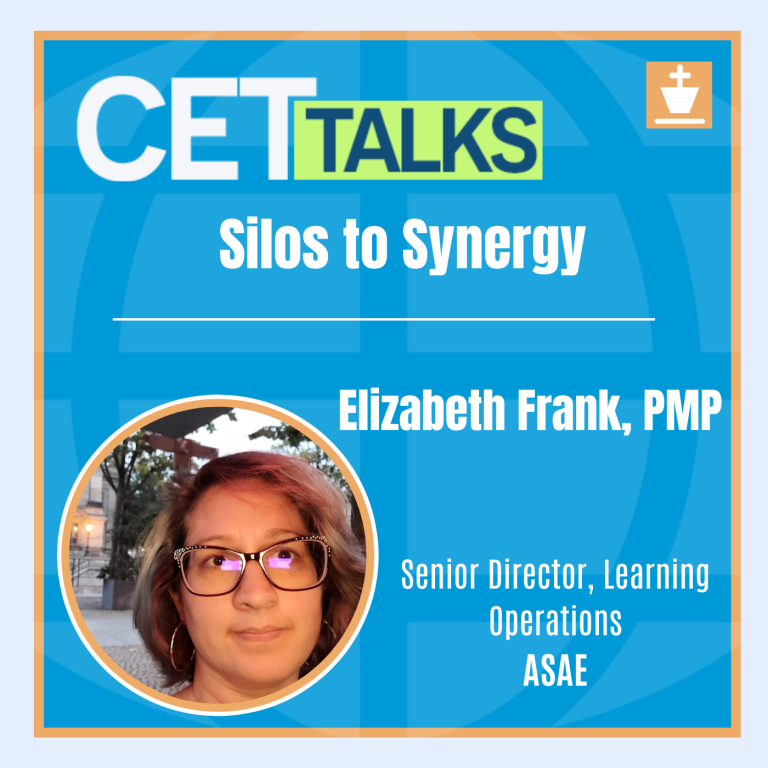
Episode 30: Silos to Synergy: Holistic Approaches to Creating Collaborative Learning

Episode 29: Credentials in Crisis: Challenges and Opportunities in Modern Education Recognition
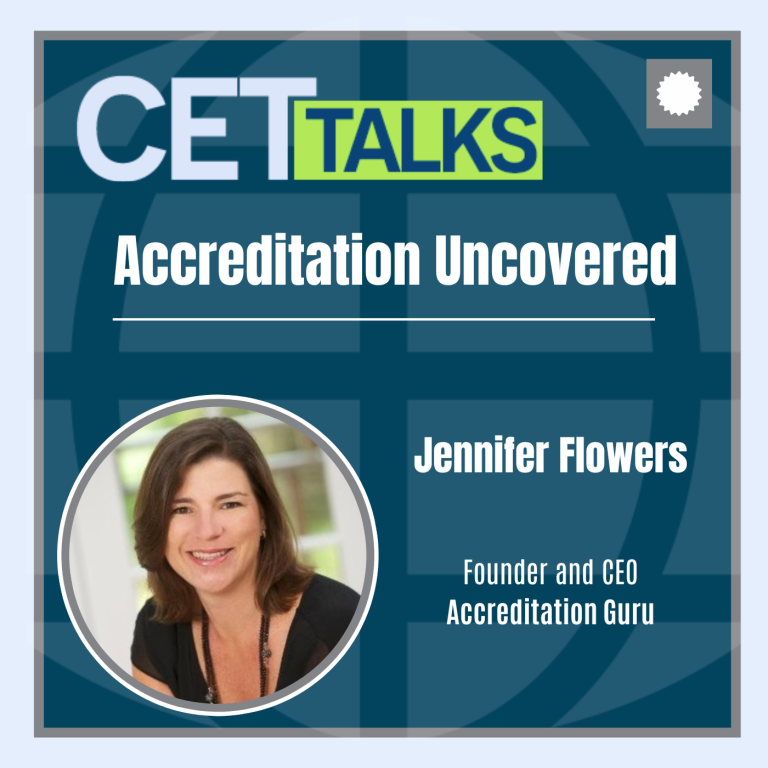
Episode 28: Accreditation Uncovered: Essential Insights from an Industry Leader

Episode 27: Two Truths with a Lie: Managing the Myths of Modern-Day Learning
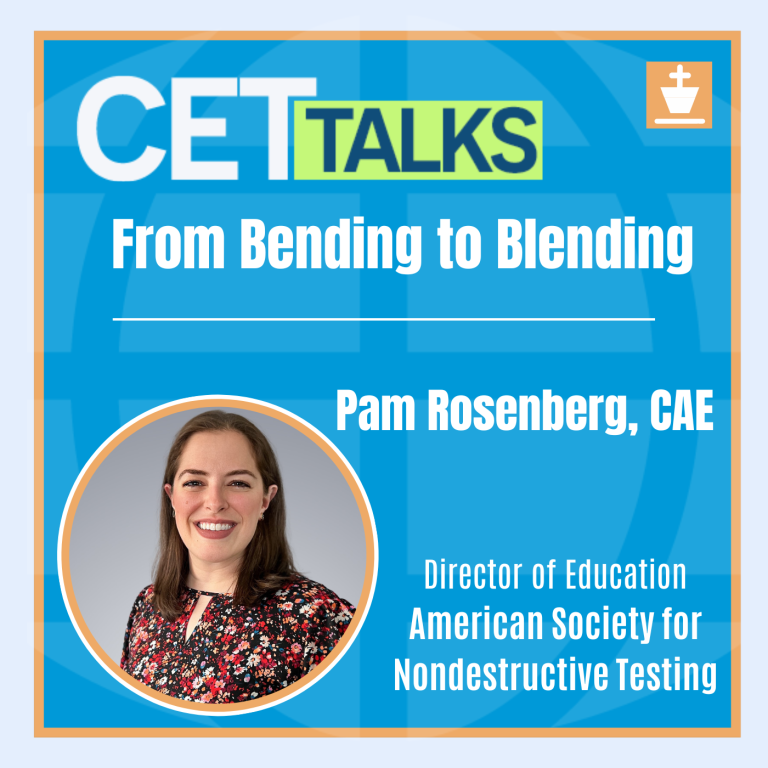
Episode 26: From Bending to Blending: Best Practices in Integrating Externally-Created Content
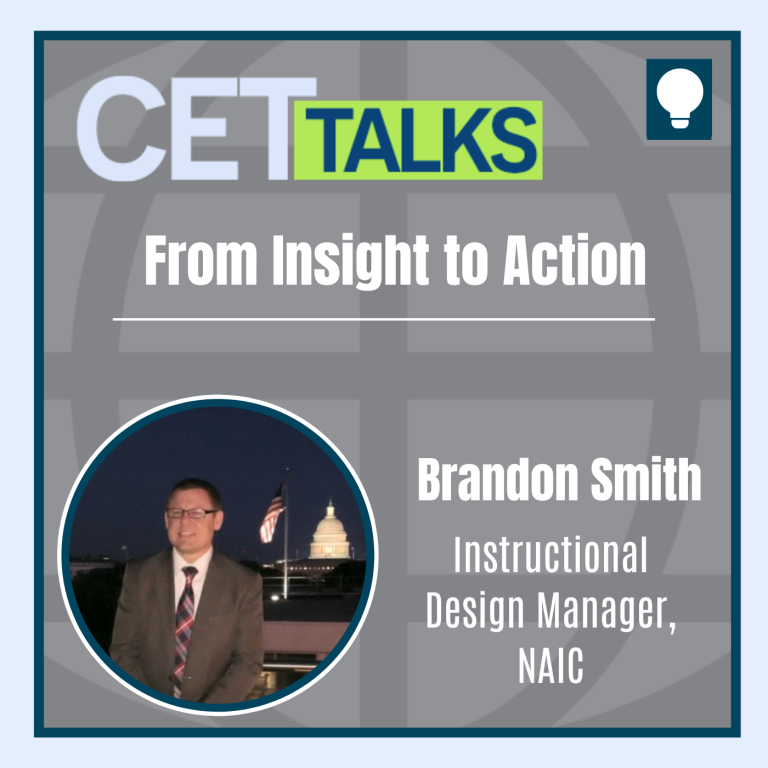
Episode 25: From Insight to Action: Charting the Career Path of a SME-turned-ISD

Episode 24: Cultivating Careers: The Power of Employee Engagement for Organizational Success

Episode 23: Igniting Imagination: Crafting Creativity in Training Environments
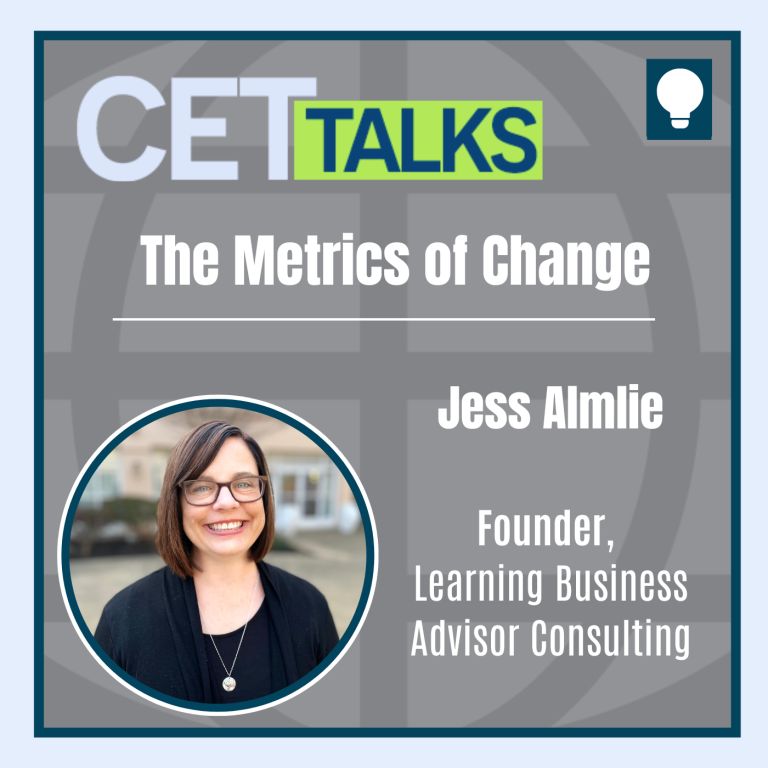
Episode 22: The Metrics of Change: Navigating Purposeful Measurement in L&D
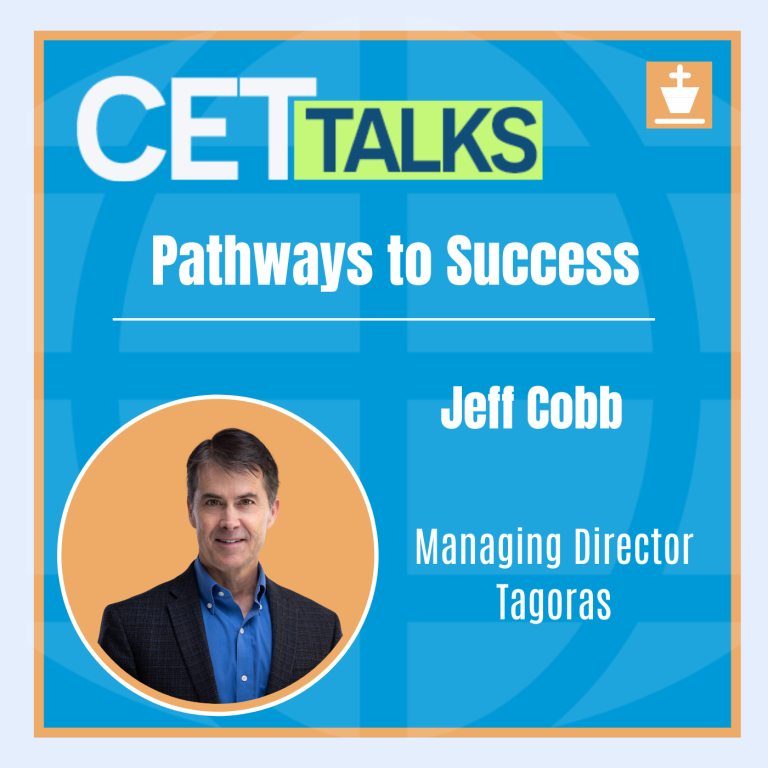
Episode 21: Pathways to Success: The Value of Lifelong Learning through Digital Credentials
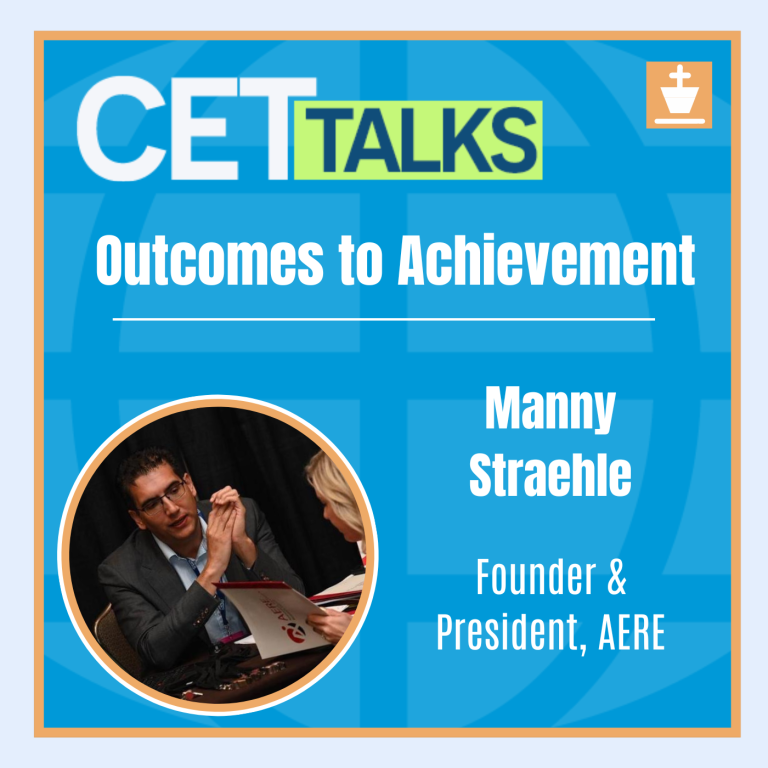
Episode 20: Outcomes to Achievement: Crafting Tomorrow’s Workforce Through Competency Models

Episode 19: Chatting with the Future: Enhancing AI Output Through Prompt Engineering

Episode 18: On the Inclusive Frontier: Harnessing Neurodivergence in Modern Training

Episode 17: Designing with Purpose: Strategies for Accessible e-Learning Development
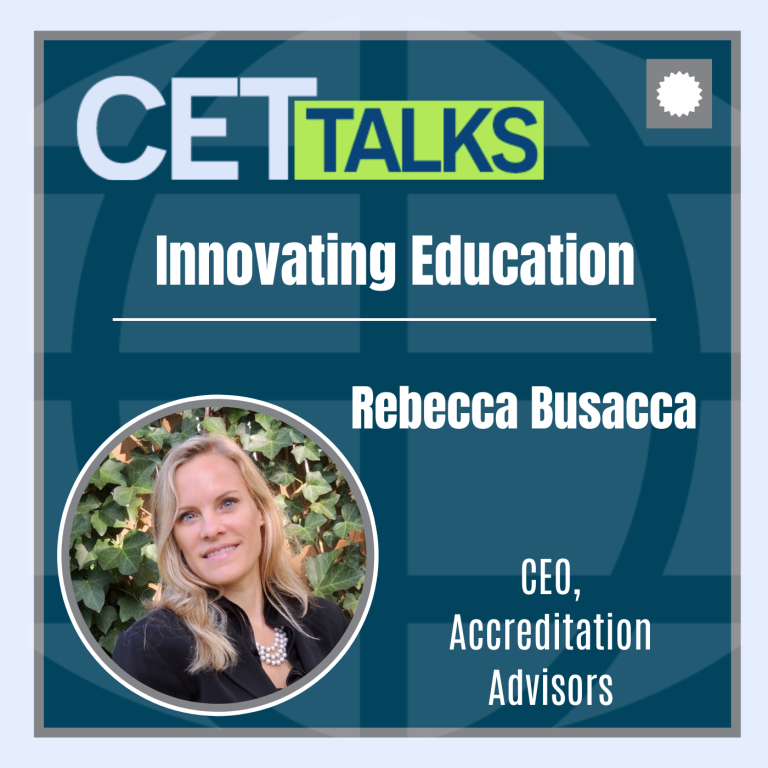
Episode 16: Innovating Education: Navigating Accreditation for Short-Term Training
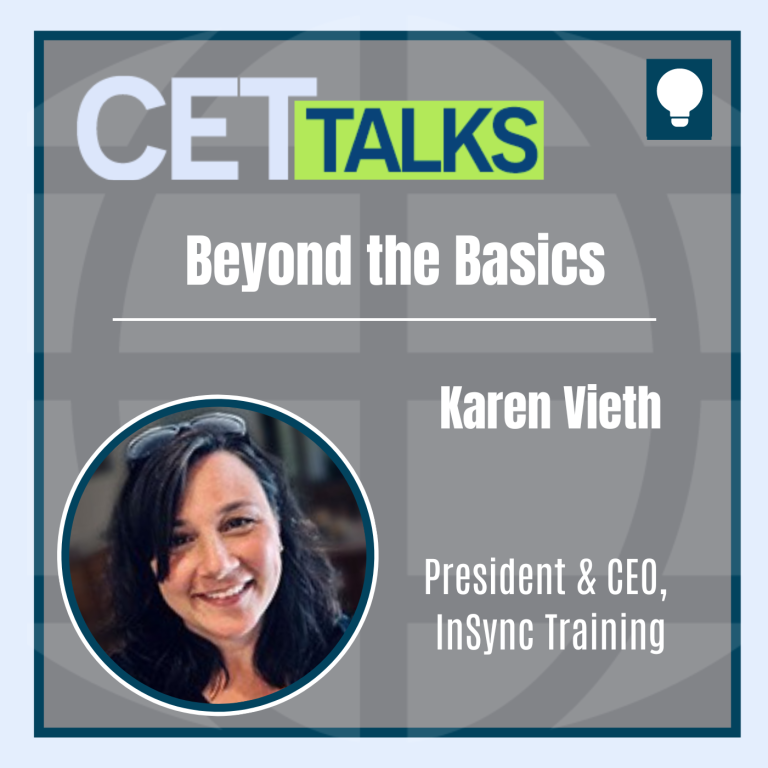
Episode 15: Beyond the Basics: Elevating Virtual Training through Expert Facilitation
